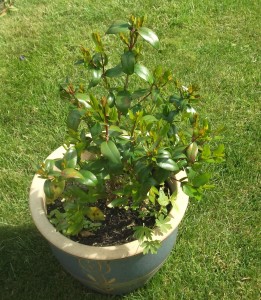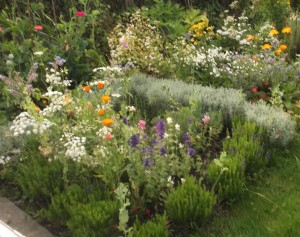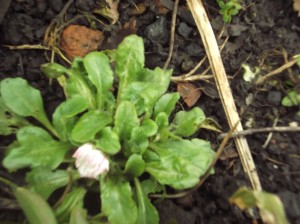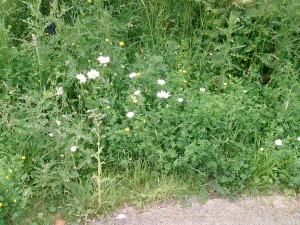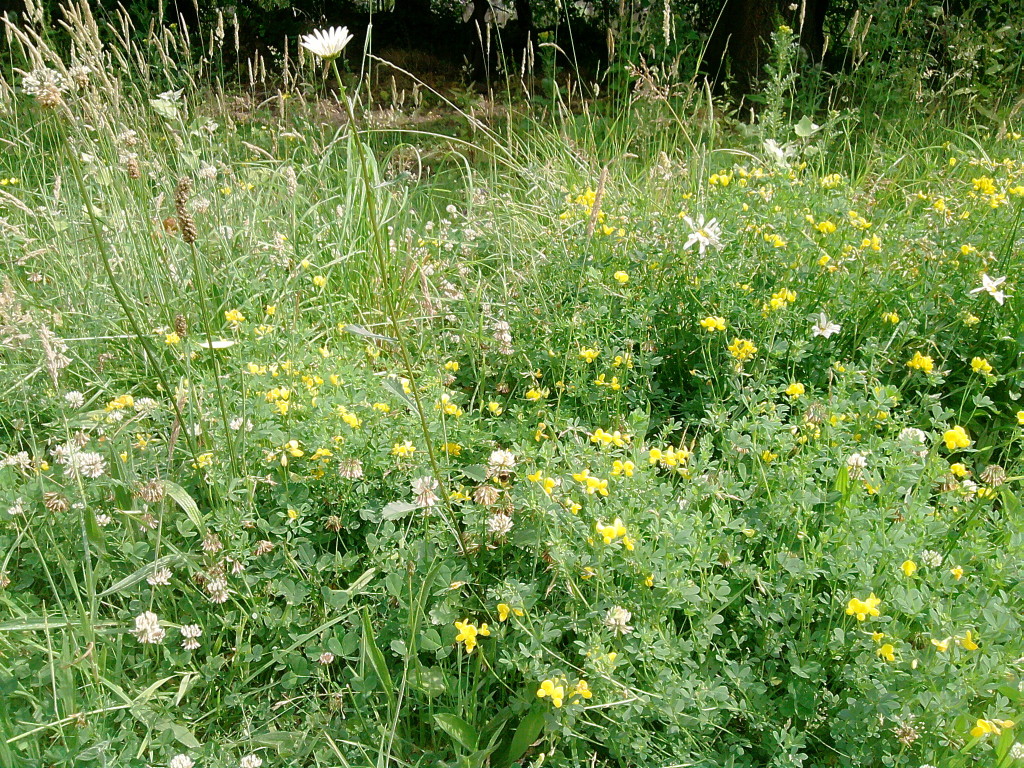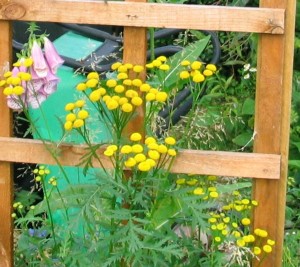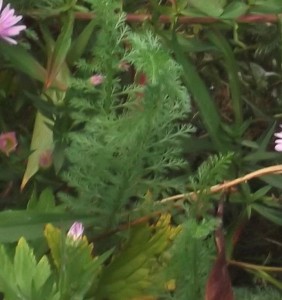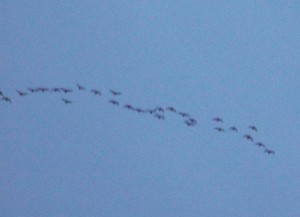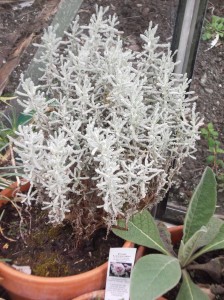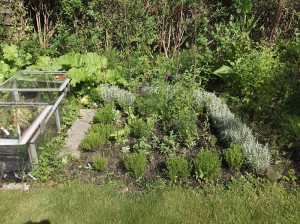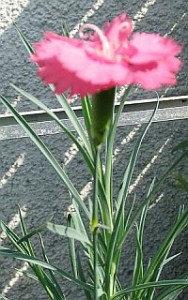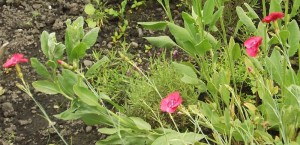 I think this is lesser skullcap, which I found growing wild on a grass verge near the local cinema. It’s on a narrow strip of land above a steep bank down to the river, too narrow for anyone to build on, and I’ve found plants there I’ve never seen anywhere else. In parts of Ireland, the word ‘haggard’ describes just this sort of place. Originally it derives from the old Norse ‘hæɡərd’ meaning a small enclosure near a farmhouse where crops were stored, but later it was used to mean the small scraps of land, too small for farm-scale cultivation, where the poor were allowed to grow potatoes for themselves, and later again, land that had been allowed to run wild. I also noticed, when I googled the ON word, that it is now a fictional Irish city which features in a series of apocalyptic fantasy novels, but moving on —-
I think this is lesser skullcap, which I found growing wild on a grass verge near the local cinema. It’s on a narrow strip of land above a steep bank down to the river, too narrow for anyone to build on, and I’ve found plants there I’ve never seen anywhere else. In parts of Ireland, the word ‘haggard’ describes just this sort of place. Originally it derives from the old Norse ‘hæɡərd’ meaning a small enclosure near a farmhouse where crops were stored, but later it was used to mean the small scraps of land, too small for farm-scale cultivation, where the poor were allowed to grow potatoes for themselves, and later again, land that had been allowed to run wild. I also noticed, when I googled the ON word, that it is now a fictional Irish city which features in a series of apocalyptic fantasy novels, but moving on —-
Actually, that isn’t too far off where I was going with this post. When I was trying to describe the next phase of my writing (both about herbs and about poetry) I caught myself saying that when things get a bit apocalyptic, people start getting into herbs. So things must be fairly apocalyptic just at the moment, wouldn’t you think? The word ‘apocalypse’ might be too strong, but there is a serious disenchantment with the political, economic and social structures of modern life on many levels. There’s a reaction to the way we work at jobs we don’t like for the money to buy goods we need to make up for the time we don’t have; or the way we have to medicate the problems brought on by the life we are expected to live; or the way our lives are constantly being tweaked to suit the systems we set up to make things simpler; or the way shedloads of information we don’t have time to absorb are being thrown at us as a substitute for actually getting to make decisions for ourselves; or the way ‘aspirations’ are distracting us from observations of how life actually is. (This post is turning out a lot more ranty than I expected.)
Last time there was so much going on with herbs was back in the seventies when we had the energy crisis, the three-day week, riots on the streets, the threat of petrol rationing and the imminent collapse of life as we know it (little did we know!). People reacted with the self-sufficiency movement, the slow food movement, the alternative therapy movement, and a whole swathe of folksy picture books teaching you how to make herb teas, pot pourri, candles with dried flowers stuck on them, and nettle soup. Since then cookery has got more serious, herbal medicine has got more scientific (at least at its best), and the herbal beauty industry has got way more commercial. But there’s still an alternative, romantic, recusant vibe about herbs.
It happens often. When St Bernard got sick of how overdeveloped monastic life had got under the regime of Cluny, and he took his followers off to start the Cistercian order, one of his ideals was that the monks should stop going to expensive doctors who prescribed elaborate medicines, but should use ‘simple green herbs’ like the poor did. When the Irish monks went to their hermitages they wrote poems about the herbs they found in the surrounding forest. In the Bible a dinner of green herbs is a life of integrity, as opposed to the rich food and intrigues of the kings palaces. And it is certainly happening now. We are looking to the wild plants of the hedges and the haggards, not just for food, medicine and comfort, but for something symbolic.
The other thing we turn to is art. Of all sorts. Theatre in the prisoner of war camps in the second world war, murals in Northern Ireland, dance in Palestine, and music everywhere – the blues, canto jondo, protest songs of all sorts. And poetry. I wouldn’t have said this twenty years ago, because the intellectual energy seemed to be elsewhere, but it’s certainly back now. People are writing, reading and sharing poetry in ways they haven’t done for years. Poetry is beginning to reflect the lives outside the academic enclosure, use different dialects and registers, take on concerns and experiences that would have been seen as ‘unpoetic’. Poets are no longer cloistered and privileged beings who don’t get their hands dirty, or who need to be protected from the harsh world of ‘real life’, they are in it, activists, carers, fundraisers and recorders of what is happening around us. And people are beginning to see poetry as part of the process of tackling the problems of our lives. What’s named can be mended.
So both sides of my writing life are in the haggards – the wild outside places, where we might find new ways of coming to terms with the hard places of life, both practical and artistic. It’s a very interesting place to be.

